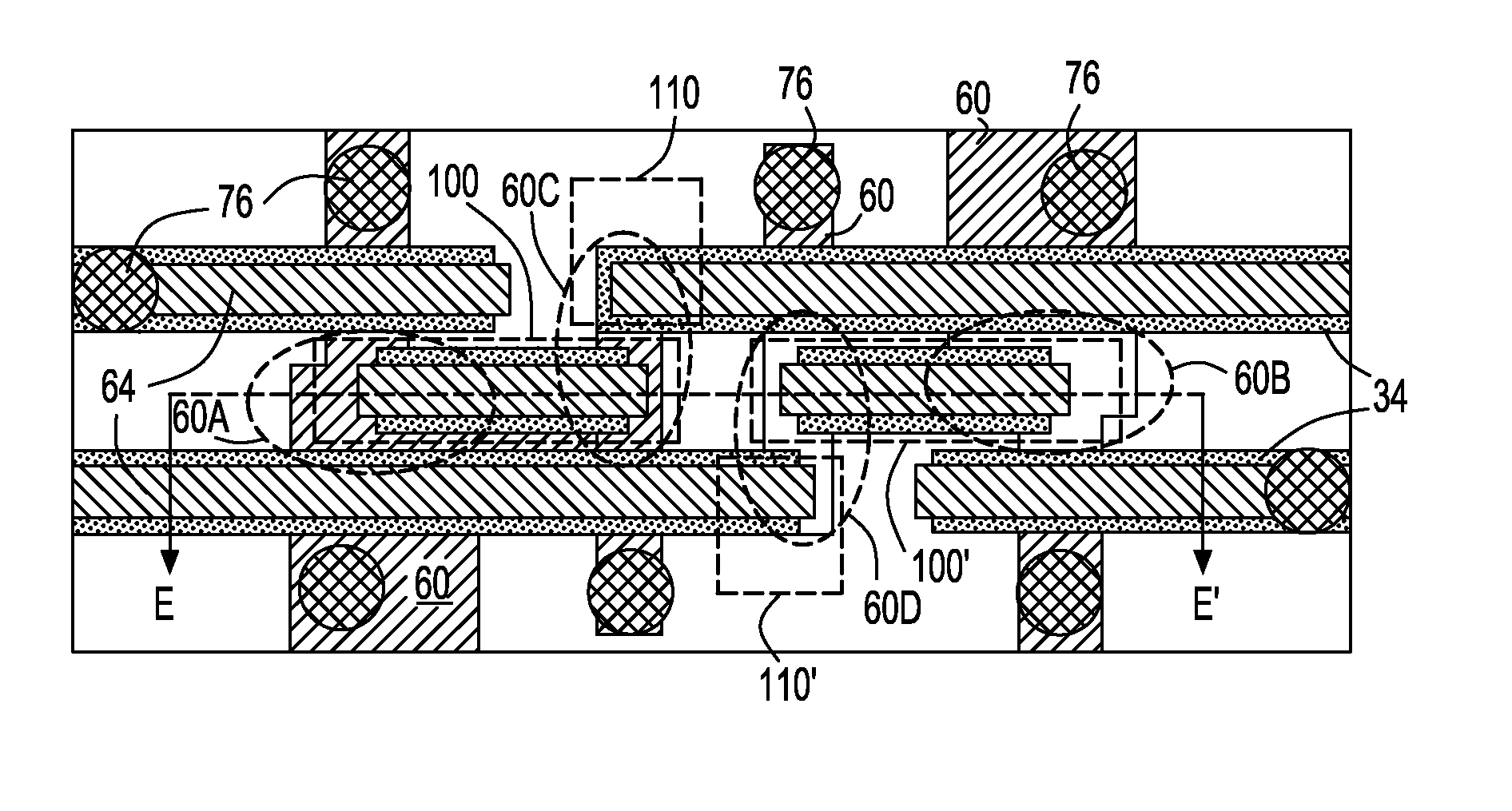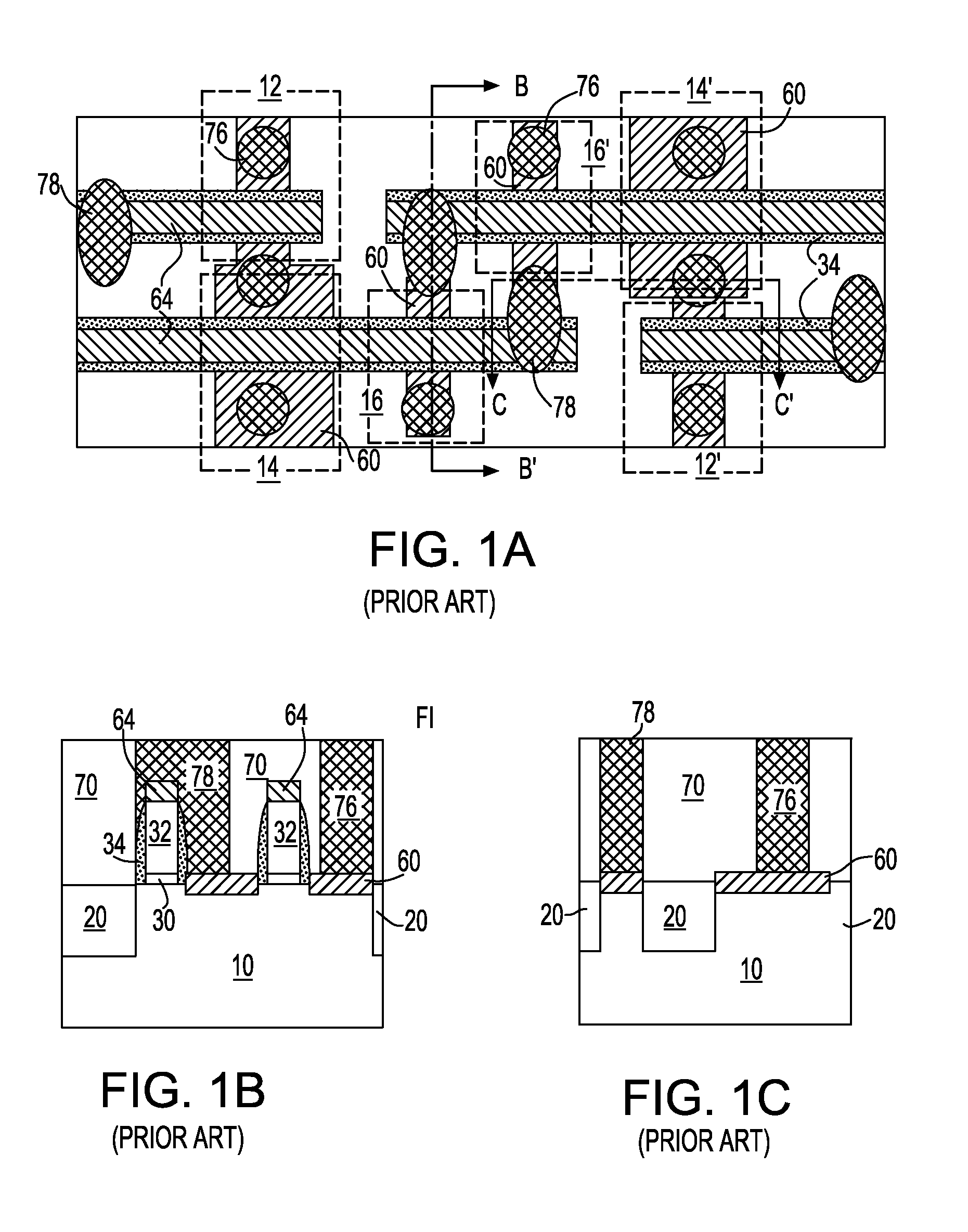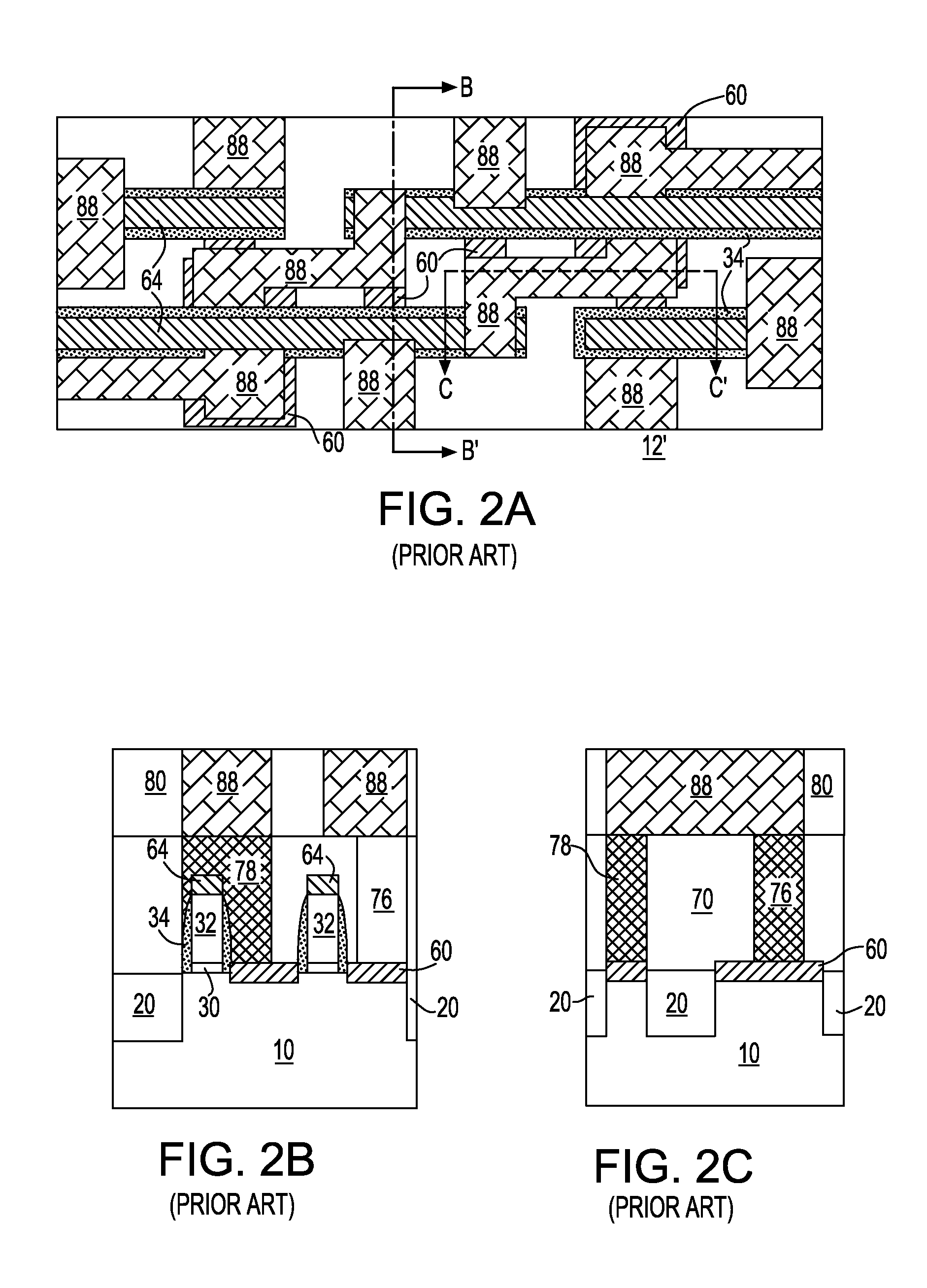Metal silicide alloy local interconnect
a technology of metal silicide alloy and local interconnection, which is applied in the direction of digital storage, semiconductor devices, instruments, etc., can solve the problems of complex wiring circuits, circuit design and processing technology challenges, and ca bars that do not provide a local interconnect solution
- Summary
- Abstract
- Description
- Claims
- Application Information
AI Technical Summary
Benefits of technology
Problems solved by technology
Method used
Image
Examples
first embodiment
[0082]According to the present invention, a first photoresist 35 is applied to the top surface of the silicon containing layer 31 and lithographically patterned as shown in FIGS. 6A-6C. The pattern in the first photoresist 35 contains shapes for gate conductor lines to be formed subsequently. The pattern in the first photoresist 31 is transferred into the silicon containing layer 31 to form gate conductor lines 32. The pattern is further transferred into the gate dielectric 30 so that exposed portions of the gate dielectric 30 is etched from the top of the semiconductor substrate 10. The first photoresist 35 is subsequently removed. A suitable surface clean may be employed thereafter.
[0083]Alternate methods may be employed to form the gate conductor lines 31 such as methods according to a second embodiment of the present invention, which will be shown below after description of the common processing steps of the first and the second embodiments of the present invention.
[0084]Accordi...
second embodiment
[0102]According to the present invention, the gate conductor lines 32 are formed using an alternate sequence of processing steps.
[0103]Referring to FIGS. 14A-14C, after the processing steps corresponding to FIG. 5, a first dielectric layer 51 is deposited directly on the silicon containing layer 31. The first dielectric layer 51 may comprise silicon oxide, silicon nitride, silicon oxynitride, or a silicon germanium alloy with a higher concentration of germanium than the underlying silicon containing layer 31. The thickness of the first dielectric layer 51 may be in the range from about 40 nm to about 300 nm, and is preferably in the range from about 80 nm to about 200 nm.
[0104]Referring to FIGS. 15A-15C, a third photoresist 53 is applied onto the top surface of the first dielectric layer 51 and is lithographically patterned. The pattern in the third photoresist 53 is transferred into the first dielectric layer 51 by a reactive ion etch (RIE), which is preferably selective to the und...
PUM
| Property | Measurement | Unit |
|---|---|---|
| thickness | aaaaa | aaaaa |
| thickness | aaaaa | aaaaa |
| thickness | aaaaa | aaaaa |
Abstract
Description
Claims
Application Information
 Login to View More
Login to View More - R&D
- Intellectual Property
- Life Sciences
- Materials
- Tech Scout
- Unparalleled Data Quality
- Higher Quality Content
- 60% Fewer Hallucinations
Browse by: Latest US Patents, China's latest patents, Technical Efficacy Thesaurus, Application Domain, Technology Topic, Popular Technical Reports.
© 2025 PatSnap. All rights reserved.Legal|Privacy policy|Modern Slavery Act Transparency Statement|Sitemap|About US| Contact US: help@patsnap.com



